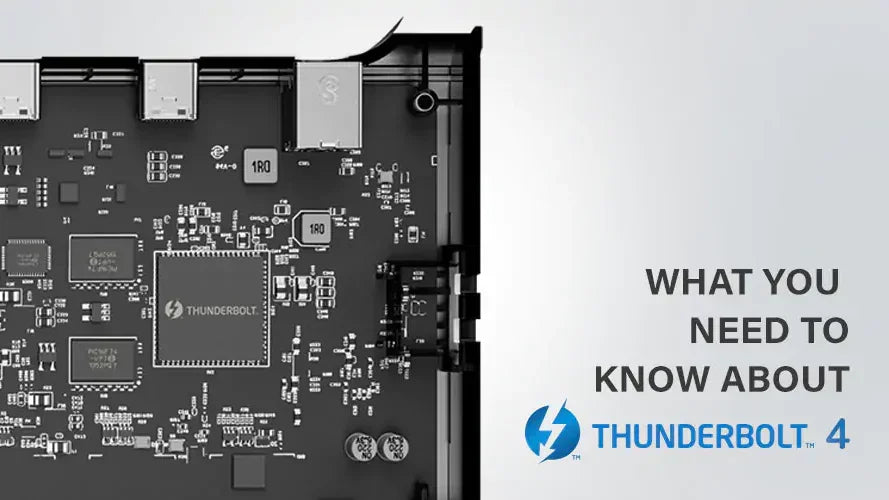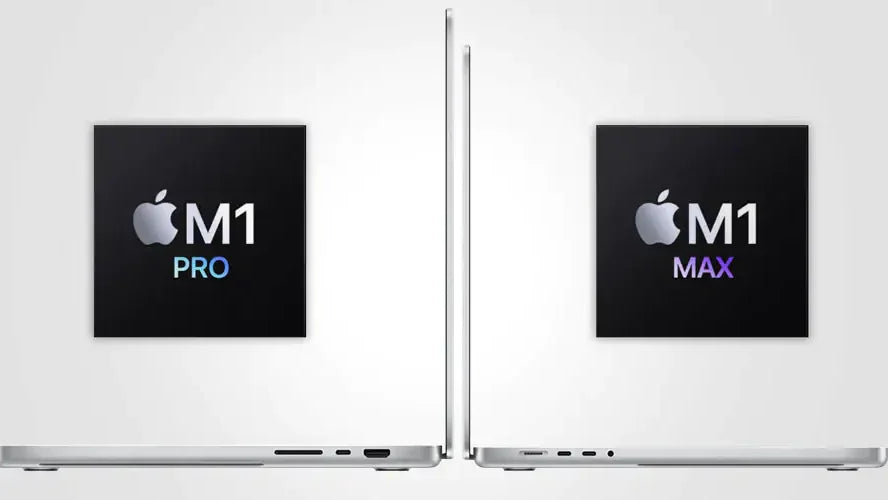2022 marks two years since INTEL announced the specifications for hardware interface technology Thunderbolt 4. The powerful connectivity solution is becoming increasingly common in laptops and docks today, but not everybody is up to speed with its capabilities. Here, ALOGIC further de-mystifies how households and businesses can benefit from the next-generation technology.
When INTEL announced details of its Thunderbolt 4 connection standard in July 2020, consumers of laptops, computer monitors and docking stations had a lot of questions. In truth, many still do today, too. Namely: What is Thunderbolt 4? What does Thunderbolt 4 actually do? Do I need a Thunderbolt 4 laptop? Is Thunderbolt 4 any different from Thunderbolt 3? Is Thunderbolt 4 the same as USB4?

It’s unsurprising. Firstly, the USB ecosystem and its nomenclature are prickly to navigate. Confusion, understandably, abounds. Secondly, in superficial terms, Thunderbolt 4 and Thunderbolt 3 do appear to be relatively similar. The same, to some degree, can also be said about comparisons between Thunderbolt 4 and USB4.
The differences however, while nuanced, are important. Because they can be advantageous for households and offices who require a best-in-class desk set up to heighten their efficiency and productivity while they work.
So, what do you need to know about Thunderbolt 4?
What is Thunderbolt 4?
As we highlighted in our recent blog, Thunderbolt 4 is Intel’s hardware interface technology built into USB ports. End users plug into these ports to store and transfer data across devices including laptops and docking stations, deliver up to 100W power to their laptops, and show video on external monitors.
Thunderbolt 4 products feature the following capabilities:
- 40Gbps data transfer speeds. At that speed, which is eight times faster than USB 3.0, you can transfer a 4K movie file inside 30 seconds, or back up a year’s worth of MP3 albums in less than five minutes
- PCIe at 32Gbps [minimum] for storage speeds up to 3000MBps, which doubles Thunderbolt 3’s minimum requirements
- At least one port that can deliver up to 100W power for laptop charging
- Wake from sleep function on all docks, and protection against Thunderspy attacks
- 40Gbps transfer speeds for cables up to two metres in length, for added practicality
- Minimum PC port power of 15W
- Support for four Thunderbolt 4 ports on docks
In the Thunderbolt 4 world, all it takes is a single cable [a universal two-metre cable that’s flippable and reversible] to connect your Thunderbolt 4 laptop to business-class docks, enlarged 4K monitors, and the gamut of desk accessories, including mouse, keyboard and webcam.

For the growing number of content and multimedia creators in the workplace today, Thunderbolt 4 can be a big blessing. It’s at the heart of the colour-accurate monitors professionals need for work such as commercial photography and print design. Audio engineers, webinar creators and podcasters can benefit from low latency audio interfaces, and videographers and visual artists can save big time on transferring big files. That’s time they can reallocate to creative work and productivity.
Effectively, Thunderbolt 4 technology functions a portal into reimagined workspaces, or play spaces.
Households and offices, including those of M1 Max and M1 Pro MacBook Pro and Surface Pro 8 users, can connect with Thunderbolt 4 hardware – docks, monitors, external storage devices, external graphics, and desktop storage spaces – for smarter workspaces.
Apple and Microsoft Bypass USB-A and Embrace Thunderbolt 4 in New Laptops
Since the introduction of Thunderbolt 3, figures from Intel indicate that hundreds of millions of Thunderbolt 3 computers and accessories have been shipped. In 2020, it also reported that the dock market is growing at 10 per cent per year. According to Intel’s internal research and projections, the Thunderbolt dock mix is expected to grow by 25-40 per cent over the next few years.
Already, a growing number of computer manufacturers have begun to roll out Thunderbolt 4 laptops geared towards high-performance in the office at home.

Most notably, in recent times, Apple launched its new M1 Max and M1 Pro Macbooks, which both feature three USB-C ports with Thunderbolt 4 capability.
Like Apple, Microsoft’s new Surface Pro 8 discards USB-A ports and introduces Thunderbolt 4 into two USB-C ports.
In 2022, we will see the continued entrance of new Thunderbolt 4 cables, docking stations, laptops, and displays into the market.
Differentiating Thunderbolt 4 From Other Standards
One of the common questions people ask about Thunderbolt 4 concerns how it’s different from earlier Thunderbolt 3 and USB4.
Thunderbolt 4 leads the way on a number of important specifications, as outlined in the table below.
|
|
Thunderbolt 4 |
USB4 |
Thunderbolt 3 |
|---|---|---|---|
|
Required to support up to four Thunderbolt ports |
Yes |
No |
No |
|
Top Data Transfer Speeds |
40Gbps |
40Gbps |
40Gbps |
|
Minimum PC Data Requirements |
32Gbps |
10Gbps |
16Gbps |
|
Charging ports for PCs |
At least one required |
Not required |
Not required |
|
Required to Wake from sleep |
Yes |
No |
No |
|
Minimum port power for accessories |
15W |
7.5W |
15W |
|
Minimum display requirements |
Two 4K displays [one 8K display] |
No min requirements |
One 4K display |
Do ALOGIC’s Docks Feature Thunderbolt 4?
ALOGIC recently released two new Thunderbolt 4 accessories, the Thunderbolt 4 BLAZE Docking Station and the Thunderbolt 4 BLAZE Hub.
Both the BLAZE Dock and Hub are business-class docks designed to give laptop users – especially M1 Max and M1 Pro MacBook users – more options to capitalise on the benefits of Thunderbolt 4.

ALOGIC’s Blaze Docking Station and Hub each feature three USB-C/Thunderbolt 4 ports.
The BLAZE Dock features three USB-C/Thunderbolt downstream ports to enable end-users to daisy chain other Thunderbolt accessories or connect up to two 4K@60Hz external displays.
The BLAZE Dock also supports wider connectivity via three USB-A ports [10Gbps] and one USB-A port for mobile device charging [480Mbps].
Laptop users can also plug into the dock for reliable Internet over Gigabit Ethernet, headphone/microphone connection, and an SD 4.0 card reader to move big files in a flash.
The BLAZE Hub, on the other hand, is one of the most compact and powerful Thunderbolt 4 docks on the market right now.
Like the BLAZE Dock, it’s built with three USB-C/Thunderbolt downstream ports for breakneck data transfer, Thunderbolt accessory connectivity, and stunning display support.
The competitively-priced Hub, however, features a select suite of USB ports, making it a good match for work stations already connected to a comprehensive suite of wireless devices.
As people become increasingly curious about the benefits of Thunderbolt 4, there’s more and more to discover about how different the standard is from Thunderbolt 3 and USB4.
That’s important knowledge for businesses and households.
Learn more about ALOGIC’s Thunderbolt 4 BLAZE Docking Station and Thunderbolt 4 BLAZE Hub today.



 USA
USA
 Canada
Canada Australia
Australia UK
UK Europe
Europe New Zealand
New Zealand Japan
Japan Singapore
Singapore UAE
UAE India
India




Leave a comment
This site is protected by hCaptcha and the hCaptcha Privacy Policy and Terms of Service apply.